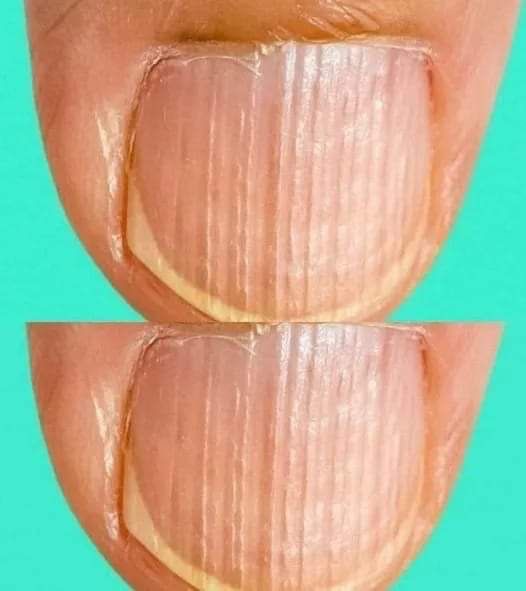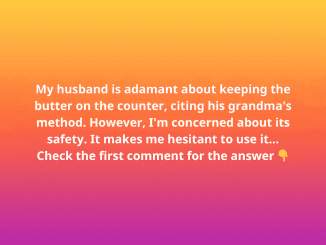Your nails aren’t just for holding your favorite nail polish or showcasing intricate designs—they can actually reveal a lot about your overall health. From subtle ridges to discoloration, changes in your nails may serve as warning signs of underlying conditions, including issues with your heart, liver, or even your nutrition.
While a fresh manicure might hide some imperfections, it can’t cover up the subtle clues your nails offer about your well-being. In this article, we’ll explore how certain changes in your nails can point to health problems, the different types of nail stripes, and when you should consult a healthcare professional.
Why Your Nails Matter: Health Indicators at Your Fingertips

It may sound surprising, but your nails are more than just a cosmetic feature—they’re like a mirror reflecting your internal health. Changes in the texture, color, or shape of your nails can sometimes point to underlying conditions such as nutritional deficiencies, thyroid problems, or even more serious diseases.
The health of your nails may be one of the first signs that something is off in your body, making it important to keep an eye on any changes. From vertical stripes to discolored nails, let’s dive into what these changes could mean for your health.
Types of Nail Stripes and Their Health Implications
Nail stripes, also known as ridges or lines, are common and often harmless, but some may signal a more serious health issue. Understanding the different types of stripes can help you identify potential concerns early.
Vertical Stripes: The Aging or Nutritional Clue
Vertical stripes or ridges running from the cuticle to the tip of your nails are a common sight as we age. These ridges are often associated with the natural aging process, as our nails can lose their smoothness over time. In most cases, vertical stripes are harmless and simply a sign of growing older.
However, these ridges can sometimes indicate a deficiency in essential vitamins or minerals, including iron, magnesium, or vitamin B12. If the appearance of these ridges is sudden or more pronounced than usual, it might be worth investigating conditions like anemia or thyroid problems.
How to Spot the Difference:
- Normal Aging: Ridges that develop gradually over time.
- Potential Health Issue: Abrupt or noticeable ridges that emerge suddenly.
Horizontal Stripes: A Warning of Serious Illnesses
Horizontal stripes, also known as Beau’s lines, are grooves that appear across the nail plate. Unlike vertical ridges, these horizontal indentations are often a cause for concern, as they may indicate more severe health issues. Beau’s lines can result from conditions like respiratory disorders, diabetes, heart attacks, or malnutrition. They may also appear after physical trauma to the nail or during periods of extreme stress or illness.
These lines develop because the body temporarily halts nail growth in response to severe illness or stress. According to the National Library of Medicine, the sudden onset of Beau’s lines often points to a systemic disease, such as pneumonia, syphilis, or even heart conditions like coronary thrombosis.
When to Seek Help:
- Sudden Appearance: If Beau’s lines appear suddenly and on multiple nails, it’s a strong indicator of an underlying illness.
- Consult a Doctor: Especially if the lines occur along with other symptoms like fatigue, fever, or unexplained weight loss.
White Stripes: A Sign of Liver or Kidney Issues

White horizontal lines, known as Muehrcke’s lines, can be a sign of liver or kidney problems. These parallel white lines do not indent the surface of the nail but are visible across multiple nails. The lines often fade when you apply gentle pressure to the nail, which is a key characteristic.
Muehrcke’s lines are commonly seen in individuals with chronic liver diseases or malnutrition, especially when blood protein levels (particularly albumin) are low. If you notice these lines, it’s important to consult with a doctor, as they may indicate serious liver or kidney issues that require medical attention.
Red Flags:
- Multiple Nails Affected: Muehrcke’s lines usually appear on several nails, signaling systemic problems.
- Liver or Kidney Disease: These lines may be linked to conditions such as cirrhosis or kidney failure.
Nutritional Deficiencies: Your Nails May Tell the Story
Sometimes, changes in your nails have less to do with serious diseases and more to do with your diet. If your nails are brittle, weak, or peeling, this can often be traced back to poor nutrition or digestive issues.
Dr. Sara Norris, a naturopathic doctor, notes that brittle nails are commonly linked to nutritional deficiencies. A diet lacking in essential vitamins and minerals—like biotin, vitamin E, iron, and zinc—can result in nails that break easily and lack vitality. Ensuring a well-balanced diet rich in these nutrients can help improve nail health over time.
Simple Fixes:
- Balanced Diet: Ensure you’re getting enough of the essential vitamins and minerals needed for strong nails.
- Supplements: If your diet lacks certain nutrients, supplements like biotin and zinc may help improve nail health.
Healthy Nails Start with Healthy Habits

Taking good care of your nails can make a big difference in both their appearance and overall health. Regularly moisturizing your nails and cuticles can help keep them strong, and eating a balanced diet ensures your body gets the vitamins and minerals it needs for healthy growth.
In addition, avoid harsh chemicals like those found in some nail polishes or removers, as they can weaken the nails over time. If you notice sudden changes or significant health issues with your nails, it’s always a good idea to consult with a healthcare provider to rule out any underlying conditions.
Conclusion: Your Nails Are a Window to Your Health
Your nails offer important insights into your health, and noticing any changes—whether it’s ridges, discoloration, or grooves—could be a clue to underlying health issues. From simple aging to nutritional deficiencies and more serious diseases, your nails provide valuable feedback about what’s happening inside your body.
While most nail changes are harmless and can be linked to natural aging or diet, it’s always important to stay vigilant. If you notice significant changes in your nails that don’t improve or are accompanied by other symptoms, don’t hesitate to consult a doctor. Early detection can make a world of difference in addressing health concerns before they become more serious.


